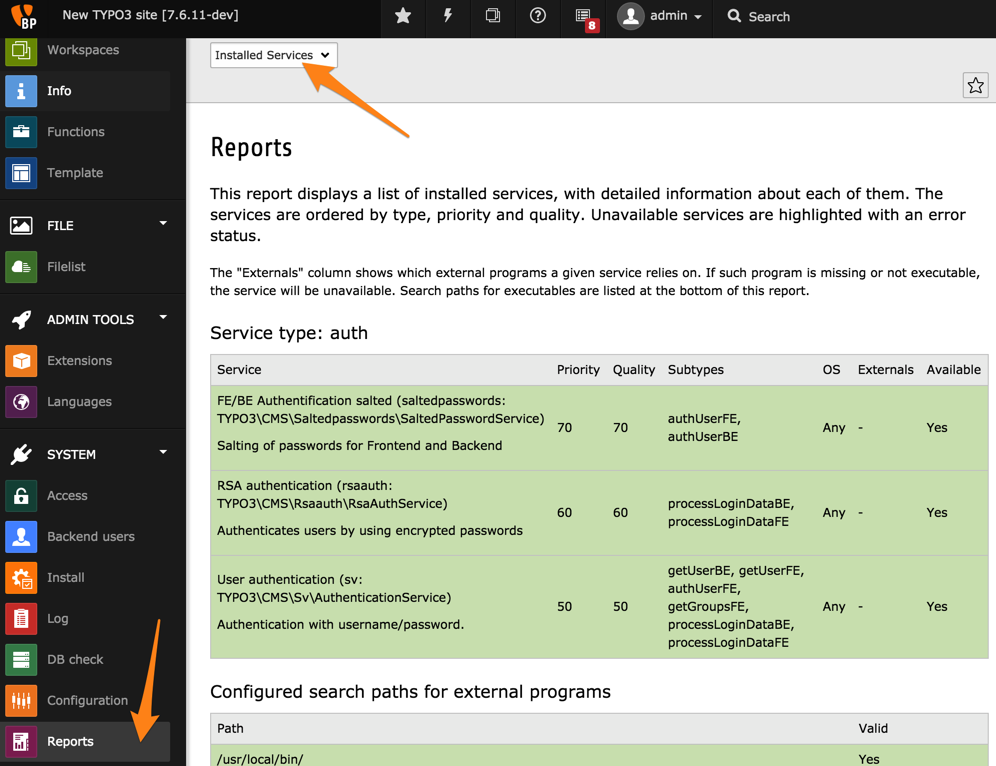Attention
TYPO3 v10 has reached end-of-life as of April 30th 2023 and is no longer being maintained. Use the version switcher on the top left of this page to select documentation for a supported version of TYPO3.
Need more time before upgrading? You can purchase Extended Long Term Support (ELTS) for TYPO3 v10 here: TYPO3 ELTS.
Service Precedence¶
Several services may be declared to do the same job. What will distinguish them is two intrinsic properties of services: priority and quality. Priority tells TYPO3 CMS which service should be called first. Normal priorities vary between 0 and 100, but can exceptionally be set to higher values (no maximum). When two services of equal priority are found, the system will use the service with the best quality.
The priority is used to define a call order for services. The default priority is 50. The service with the highest priority is called first. The priority of a service is defined by its developer, but may be reconfigured (see Configuration). It is thus very easy to add a new service that comes before or after an existing service, or to change the call order of already registered services.
The quality should be a measure of the worthiness of the job performed by the service. There may be several services who can perform the same task (e.g. extracting meta data from a file), but one may be able to do that much better than the other because it is able to use a third- party application. However if that third-party application is not available, neither will this service. In this case TYPO3 CMS can fall back on the lower quality service which will still be better than nothing. Quality varies between 0-100.
More considerations about priority and quality can be found in the Developer's Guide.
The "Installed Services" report of the SYSTEM > Reports module provides an overview of all installed services and their priority and quality. It also shows whether a given service is available or not.

The Installed Services report showing details about registered services¶
